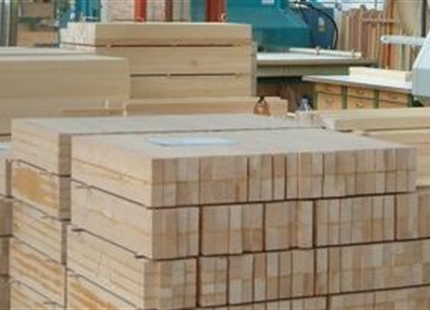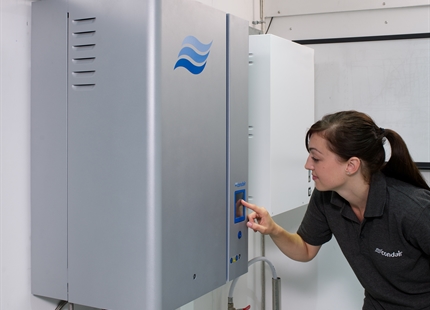

Controlling air humidity is an indispensable measure in many aspects of life. While optimal humidity ranges may vary from one industry to another, creating stable humidity environments is invaluable when preserving product value, improving equipment and employee productivity, and establishing comfortable and healthy environments for building occupants, all of which have an impact on your business's bottom-line profitability.
Why Humidity for Woodworking
Since wood is naturally hydroscopic – able to readily absorb and release moisture depending on the humidity level it is stored with in – it is important to sustain a stable environment between 40-60% relative humidity (RH).
When air is heated, humidity levels often drop to as little as 10% RH or less. RH levels under 40% reduce moisture content, leading to changes in wood dimensions. Dimensional changes can affect all aspects of a wood's size. Dried out wood blanks or parts can shrink, cup or warp, check, and split, causing a host of problems when the wood 's shape or size no longer fits proper dimensions for planing, shaping, or assembly. Once the damage is done, it is usually impossible to correct it.
Gluing and laminating issues are common. Glues often do not cure as completely and uniformly in dry conditions. Ill-fitting pieces also are frequently subject to gluing problems. Dry air can often lead to glue joints separating or veneers popping off the base wood as dimensions change, or pieces twist or " pop."
At the production line, it is also likely to see reduced machine speeds, increased stops, machine settings issues and problems with production quality. This leads to predictable drops in production efficiency, increased machine and tool wear and tear, and a higher number of part rejects. Static electricity problems in a woodworking environment occur when dry air causes surfaces to become charged with static electricity. It causes a variety of problems, including dust fires and static explosions. In some cases, static electricity can also affect the way paints and finishes adhere to the wood.
Studies reveal benefits to health and comfort when working in properly humidified environments. Prolonged exposure to low humidity can result in health problems for many organs (brain, kidneys, circulation, skin, and eyes) and reduced resistance against chronic and acute airborne pollution, respiratory infections, and allergies. Maintaining the optimum humidity in a workplace improves employee health, which in turn reduces absenteeism and enhances productivity.
All these problems can be avoided or minimized by maintaining humidity levels at 40% to 60% RH in your woodworking environment, including your office, warehouse, and manufacturing/finishing departments.
Why Condair
Condair understands the intricate relationship and delicate balance of humidity required for the woodworking industry. Team with our experts to achieve a fully functioning production process while implementing energy-saving techniques and a healthy environment for your employees.

Related Posts
Individuals in the woodworking field such as furniture, cabinetry, and flooring manufacturers often...
Read moreUse Cases for Proper Humidity Control: Woodworking to Warehousing
Today, in our blog entry, let’s spotlight some of the applications that benefit most from a dedicat...
Read moreWhy Upgrade to a Modern Humidifier?
Let’s say that your business has been using an older humidifier for years at this point. It’s likel...
Read more


